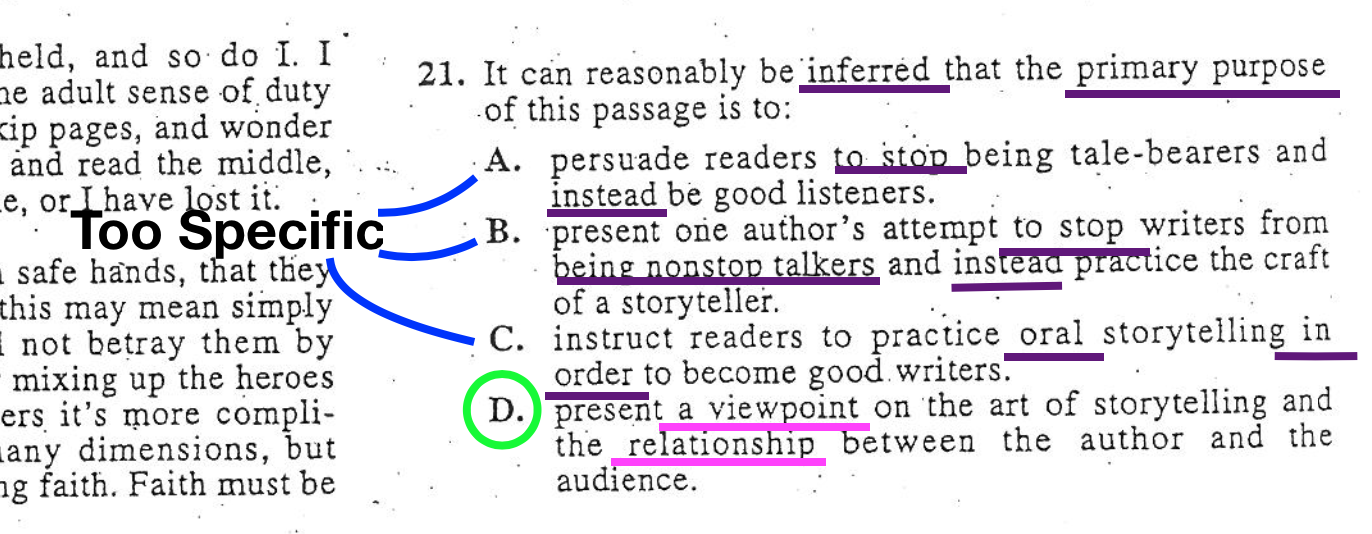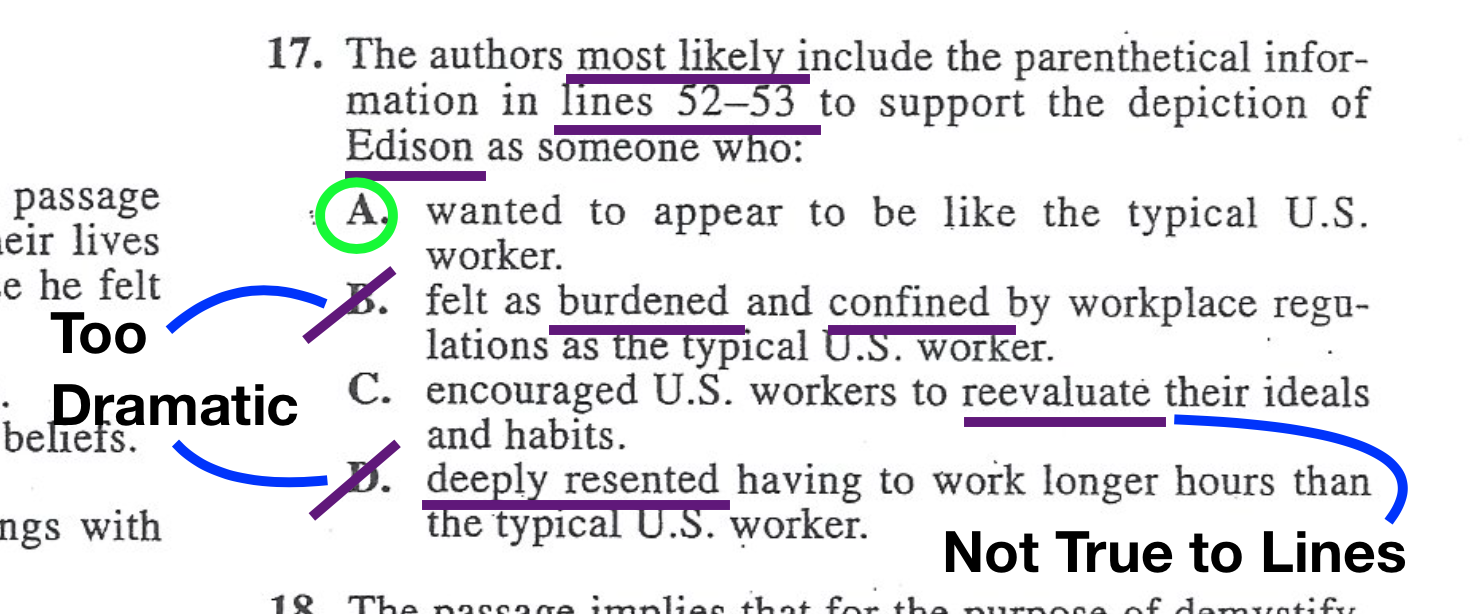In the ACT, after 45 minutes of English, 60 minutes of Math, and a 10 minute break, your next task is to complete the Reading section. In this section, you must read 4 passages (answering 10 questions for each) in 35 minutes.
The primary difficulty of the ACT reading section is the 35 minute time constraint. For students who are not naturally speedy readers, this time crunch can feel unmanageable and often causes students to freeze. Additionally, students are usually tired (mentally, physically, emotionally, etc.) by the time they reach the second half of the ACT, which can cause them to reread sentences over and over, losing precious time.
At Pivot Tutors, we have several tips and strategies for how to handle this section. Each student must adapt strategies to meet their specific needs. Gaining a familiarity with the Reading section through practice is very important for improvement.
One quick tip is to grow familiar with the ACT’s common wrong answer patterns. Part of mastering any standardized test is picking up on the patterns inherent in multiple choice. Over the years, the ACT has become rather predictable in how they word their answer choices.
Wrong Answer Patterns to Look for in the ACT Reading Section
Elimination through the Tone & Scope of an Answer
-
Too Specific Answers--These wrong answers are too specific for the nature of the question. These are commonly found in questions asking for the “main idea,” “primary purpose,” or “summary” of the passage. These kinds of answers add in details that narrow the scope of the statement.
-
Tonally-Off Answers--These wrong answers offer a positive or negative tone that differs from the tone of the passage. These are commonly found in questions with the phrases “reasonably inferred” or “most strongly suggests.”
-
Extreme Answers--These wrong answers are too extreme or dramatic in tone. Words (like “only,” “never,” “solely,” or “always”) that create an absolute statement and words (like “strictly,” “laughable,” or “resents”) that create too dramatic of a statement generally indicate a wrong answer.
Elimination through an Answer’s Connection to the Passage
-
Almost True Answers--These wrong answers include language from the passage but add to or alter the text (usually in the second or third line of the answer choice). The entire answer has to be true to the passage for it to be correct.
-
Rational but Not in Passage Answers--These wrong answers add information that can’t be found in the text, even if it seems logical. These answers ask you to take too many steps away from the text and make a wild inference.
-
Locatable but Not True to Question--These wrong answers can include a phrase or word that is found back in the passage, but the answer is not correct given what the question is asking. These kinds of incorrect answers are found in questions with the phrases “according to the passage,” “based on the passage,” and “the passage states/makes clear.”
Let’s take a look at a few example ACT Reading questions. The underlined portions are clues that indicate wrong answers.

ACT READING: QUESTION 1
In the first sample question, notice how D provides us with the most general statement that reflects the overall “primary purpose of this passage.”

ACT READING: QUESTION 2
In the second sample question, notice how I can eliminate B & D due to the extremity of the language. My correct answer A is the most neutral answer choice. C would be tempting, but upon looking back at the lines, I’d notice that it is not supported by the text.

ACT READING: QUESTION 3
If I was running out of time and forced to rush through this passage, I could apply this guessing strategy and settle on C because it takes a general approach while the 3 other options take a specific approach.
Tips for Avoiding these Common Wrong Answer Patterns*
-
Read the entirety of your question and the entirety of each answer.
-
Physically cross off any wrong answers, so you don’t have to mentally keep re-eliminating the same option.
-
When directed to lines in the passage, read the full context. Correct answers are often found a little bit above or below the specified line numbers.
-
Reread your question when settling in on the right answer to double check that the answer actually directly responds to the question.
-
As a general rule, if the passage text cannot support your answer, then eliminate that answer. Correct answers are either stated directly in the passage or directly connected to supporting evidence in the passage.
*These tips can be applied to the SAT Reading section as well.
Looking for wrong answer patterns shouldn’t take precedent over looking for the correct answer; instead, you should use the wrong answer patterns to aid your process of elimination or to help you effectively guess when you are running out of time. The goal is to be able to easily eliminate answer choices using the tone and key words of the answer, especially when you’re vacillating between two options.
Seeing behind the answer choices takes a lot of practice, but once you start noticing the ACT’s common traps, then you can more effectively avoid them.
Need additional help with the ACT? Contact Pivot Tutors to set up your test prep plan today.
